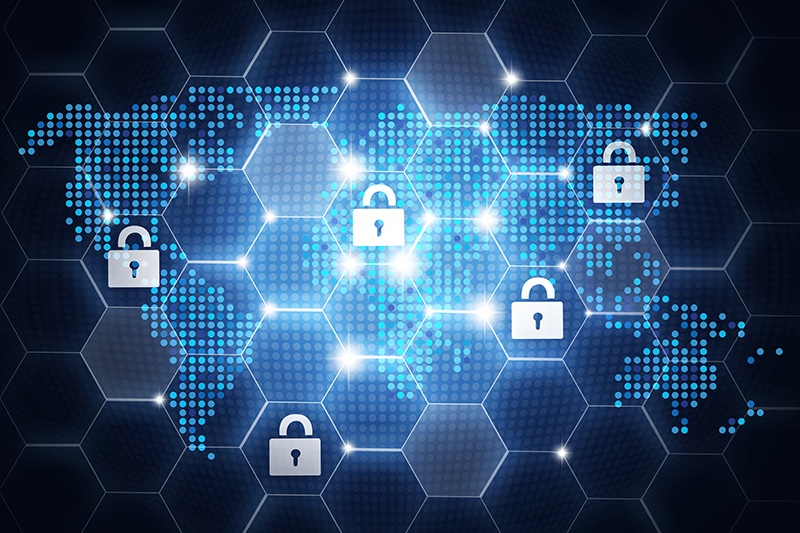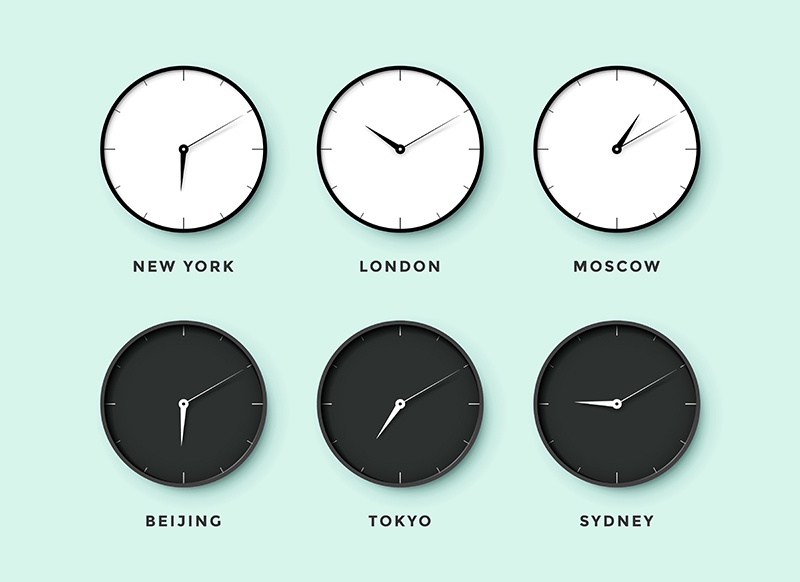22 Feb 2018
Patents give you the right to exclude others from making, selling, using, or importing a particular product or service — and to claim royalties from anyone who infringes your patent.
Patents are also country-specific: Your U.S. patent can’t be infringed by sales or other activities outside the U.S.
One of the most common questions our clients ask is whether they should pursue international protection as part of their overall patent strategy.
Generally speaking, if there’s a chance that you or your competitors might exploit the technology in another country, you should consider filing in that country or region of the world. But that assumes you have the resources to file in multiple jurisdictions. (Typically, you’ll want to budget between $30,000 and $50,000 per country over the lifetime of the patent.)
From a cost perspective alone, just because you can obtain a patent in another country doesn’t automatically make it the best business strategy.

6 FACTORS TO CONSIDER BEFORE PURSUING INTERNATIONAL PATENT PROTECTION
Before investing time and money to the international patent process, consider the following six factors first:
1. VALUE OF SUBJECT MATTER
Fundamentally, a patent is a business tool, which means your investment in protecting any invention should be proportionate to the invention’s value — and international patent applications can get expensive very quickly.
Before you seek extensive protections for your invention, ask yourself: how valuable is this invention to your business? Is this technology essential to any part of your business model, or is it merely incidental?
Likewise, there may be a market for your technology in a specific jurisdiction — but to justify pursuing foreign patent protection, your invention’s potential return on investment must be significant enough to offset the costs involved.
2. PATENTABILITY OF YOUR TECHNOLOGY
Your international patent strategy should prioritize applications that are likely to mature into patents within their respective jurisdictions.
Most tech companies have lots of pending patent applications — some of which will be stronger than others. Consequently, you might want to save your foreign filing budget for your strongest patent applications, and avoid a scenario where you invest in foreign protection only to see your patent applications rejected.
Additionally, some technology is simply not patentable in certain jurisdictions. For example, the ability to patent business methods and software can vary quite significantly by country. Accordingly, it’s best to consult a patent attorney about your case before moving forward.
3. LIFECYCLE OF YOUR PRODUCT
The timeline for international patent prosecution typically lags behind that for U.S. patent prosecution by at least a couple of years.
Accordingly, it might take four to six years from the time you file your U.S. application for your foreign application(s) to mature into patents.
Will your product still be on the market — or will the technology still be valuable — by the time your foreign patent issues? If your product lifecycle is too short, it may not be worthwhile to pursue international patent protection.
4. PUBLICATION REQUIREMENT AND POTENTIAL FOR TRADE SECRECY
Your invention might be better protected as a trade secret if it derives its commercial value from being kept confidential, and also can’t be reverse engineered. But you can’t have both trade secret protection and patent protection for the same invention.
If you’re undecided between patent and trade secret protection, one way to keep your options open is by submitting a non-publication request when you file a U.S. patent application, which ensures your application won’t be made public unless and until it’s issued as a patent.
But when you file a non-publication request, you must certify, at the time of filing your U.S. patent application, that the invention hasn’t been and will not be the subject of a foreign patent application. Therefore, if you file outside the U.S., you must allow your U.S. patent application to be published — which eliminates trade secret protection even if you don’t get a patent.
Consequently, by filing in the U.S. only with a non-publication request, you can preserve the potential for trade secret protection for a longer period of time.
5. STRENGTH OF ENFORCEABILITY
Even if your invention is technically patentable, there’s often not much point in obtaining a patent if you can’t enforce it. Some jurisdictions have relatively weak enforcement mechanisms, which are sometimes stacked against foreign entities.
So before you file a foreign application, consider whether you’d be able to enforce your patent in that country’s courts.
At the same time, enforcement isn’t everything, and there are occasionally good reasons to pursue patent protection in countries that don’t provide strong enforcement mechanisms. For example, obtaining a patent in some foreign countries might help you procure government support, corporate contracts, or other benefits.
6. PROVISIONAL PATENT APPLICATIONS
The vast majority of jurisdictions will accept a priority claim to a U.S. provisional patent application. But you’ll get the benefit of the provisional application filing date only if the provisional application adequately supports the claims of the foreign application.
Also, many countries have stricter rules than the U.S. for determining whether an earlier application provides adequate support, which means that some foreign patent offices might not honor your priority claim even if the U.S. patent office would.
What’s more, most countries don’t offer the same one-year “grace period” that we have under U.S. law. This means that an inventor’s own public disclosures would be considered prior art in many foreign countries, even if they were made less than a year before the priority date.
Consequently, any “intervening” publications (between the provisional application and the foreign application filing dates) might be considered prior art against your foreign application — even if it’s the inventor’s own work.
As such, if you’re planning to use a provisional patent application as the basis for a foreign application, you’ll need to be sure that the provisional application provides robust support for the priority claim.

WHERE SHOULD WE FILE FOR PROTECTION?
Given today’s interconnected global economy, the vast majority of businesses can certainly sell or manufacture their products internationally.
But because of the high costs involved in seeking foreign patent protection, you should prioritize filing in jurisdictions that actually offer your business a competitive advantage.
To determine those jurisdictions, ask yourself:
- Where do your competitors or potential business partners foreign file?
- Where would you or your competitors sell, manufacture, distribute, import, or export to?
Keep in mind that even companies with extensive budgets will typically file their critical patent applications in three to five countries at most, and keep the rest as lower-cost, domestic-only filings.
WHEN SHOULD WE FILE FOR INTERNATIONAL PATENT PROTECTION?
United States-based companies have two options for pursuing international patent protection: the Paris Convention and Patent Cooperation Treaty (PCT).
If you’re filing via the Paris Convention, you must file in each individual jurisdiction within 12 months of your U.S. filing date. As such, we typically don’t advise this route unless you know you only want to file in a couple of countries, or when speed is critical.
But if you’re filing via PCT, you’ll file a single “international” application that’s effective as an initial application with all PCT member states. Within 30 months of the earliest claimed priority date, you must “nationalize” your applications in the individual jurisdictions where you want to obtain a patent.
We generally recommend filing via PCT because it gives you an extra 18 months to decide where you want to file, as well as to raise the funds to file in those countries.
For a deeper dive into the Paris Convention versus the PCT, please check out our overview on international patent protection.
HOW MUCH DOES INTERNATIONAL PATENT PROTECTION COST?
Still on the fence about whether international patent protection really fits into your business strategy — or overall budget? Our free infographic, “The Cost of the Patent Process,” offers you a detailed breakdown of the costs and timeline for foreign filing. Download it now!
HOW MUCH DOES IT COST TO PURSUE PATENT PROTECTION? IT’S A QUESTION ON EVERY BUSINESS OWNER’S MIND.
Need to find out how much you’ll spend and when? We’ve created a free infographic to help you plan for the costs associated with securing protection for your intellectual property.
- Costs to expect during the patent process — so you’re not surprised or unprepared for fees
- Breakdowns of official government fees versus legal fees
- Where costs occur during the patent-protection timeline
- The cost of patent protection in a number of foreign countries
Fill out the short form on this page to get the infographic now.
GET THE INFOGRAPHIC

Michael K. Henry, Ph.D.
Michael K. Henry, Ph.D., is a principal and the firm’s founding member. He specializes in creating comprehensive, growth-oriented IP strategies for early-stage tech companies.

